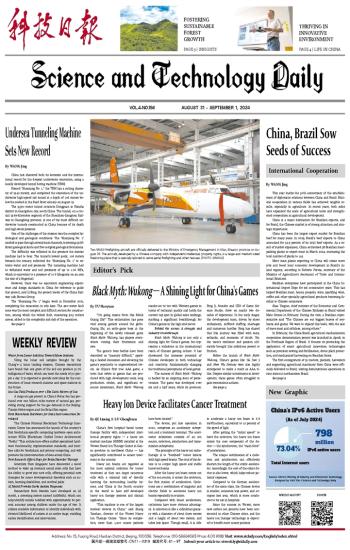
China's first hospital-based tumor therapy facility with independent intellectual property rights — a heavy ion medical machine (HIMM) installed at the Wuwei Heavy Ion Therapy Center in Gansu province in northwest China — has significantly contributed to cancer treatment in the country.
Heavy ion beams are regarded as the most optimal radiation for tumor treatment as they can target cancerous cells with a minimal risk of directly harming the surrounding healthy tissues, and China is the fourth country in the world to have self-developed heavy ion therapy systems and clinical application.
"This machine is one of the largest medical devices in China," said Zhang Yanshan, director of the Wuwei Heavy Ion Therapy Center. "Since its completion, more than 1,400 cancer patients have been treated."
The device, put into operation in 2020, comprises an accelerator subsystem and a treatment terminal. The accelerator subsystem consists of an ion source, cyclotron, synchrotron and transmission subsystems.
The principle of the heavy ion radiotherapy is to "bombard" tumor lesions with high speed beams. The crux of the device is to output high speed and stable heavy ion beams.
After the heavy ion beam comes out of the ion source, it enters the cyclotron, the first station of acceleration. Cyclotrons use a combination of magnetic and electric fields to accelerate heavy ion beams repeatedly in rotation.
Compared with linear accelerators, cyclotrons have more obvious advantages. A cyclotron is like a cylindrical granary with a diameter of about three meters and a height of about two meters, and takes less space. Though small, it is able to accelerate a heavy ion beam to 6.8 meV/nucleon, equivalent to 12 percent of the speed of light.
After getting the "initial speed" to leave the cyclotron, the heavy ion beam enters the core component of the device — the synchrotron, the "main force" of acceleration.
The unique combination of a cyclotron and synchrotron can effectively shorten the length of the entire accelerator. Accordingly, the cost of the entire device is also lower, which helps reduce patients' expenses.
Compared to the German accelerator of the same class, the Chinese device is smaller, consumes less power, and occupies less area, which is more conducive to its use in hospitals.
Since the success in Wuwei, more new carbon ion projects have been constructed in other Chinese cities, and the heavy ion therapy technology is expected to benefit more cancer patients.

 Next
Next




